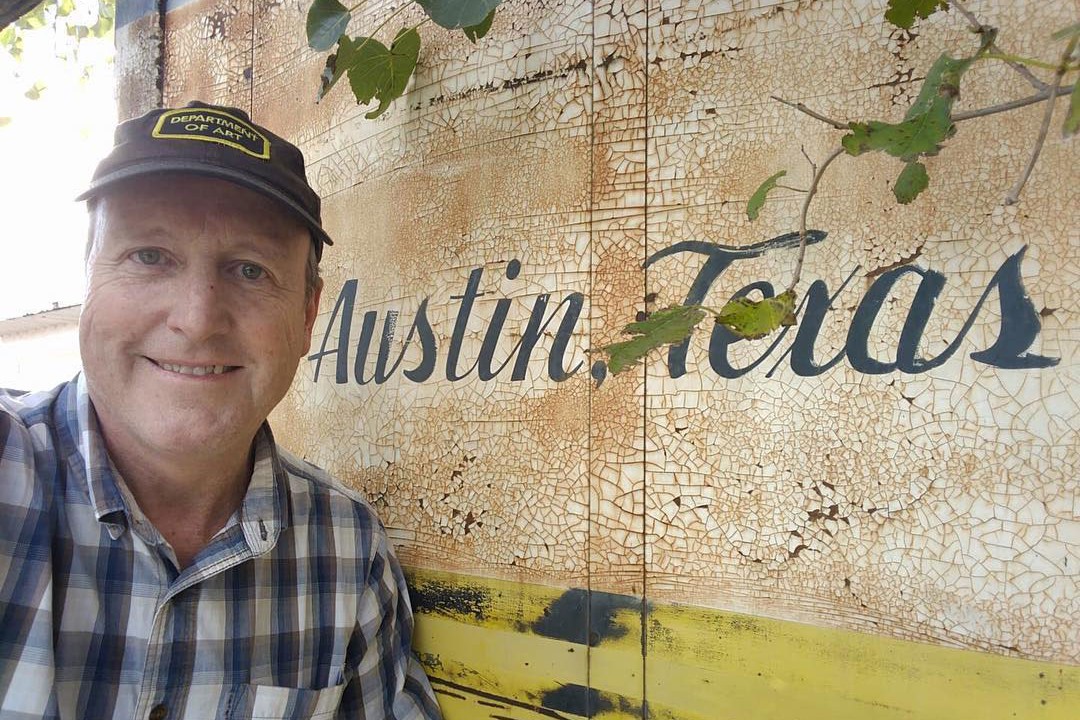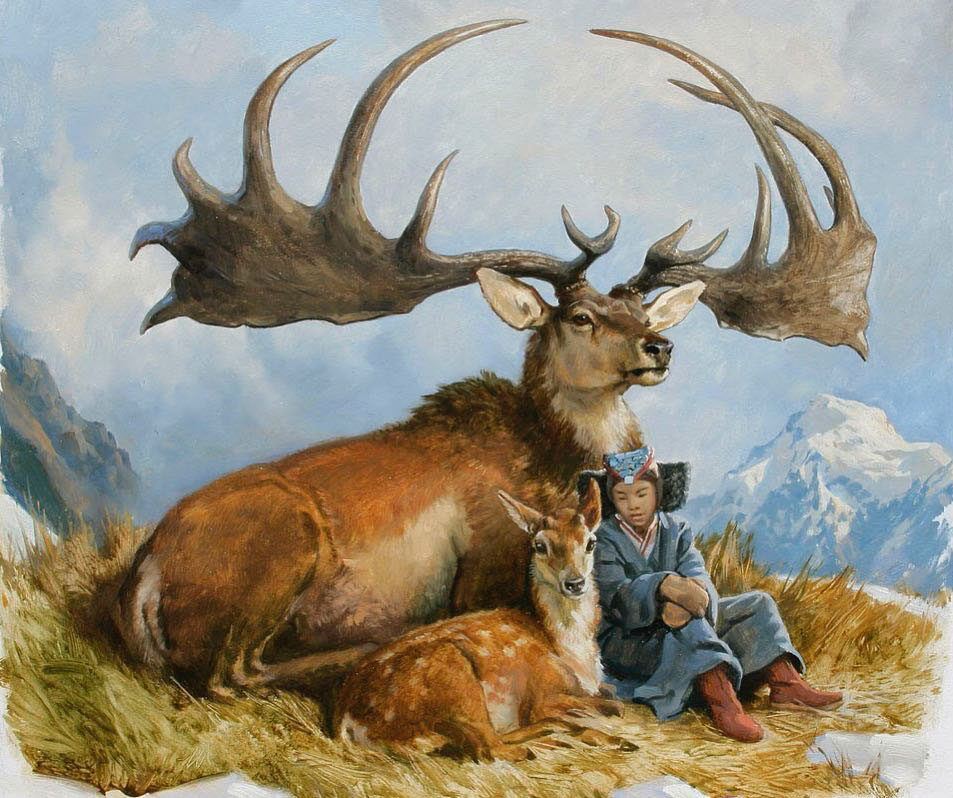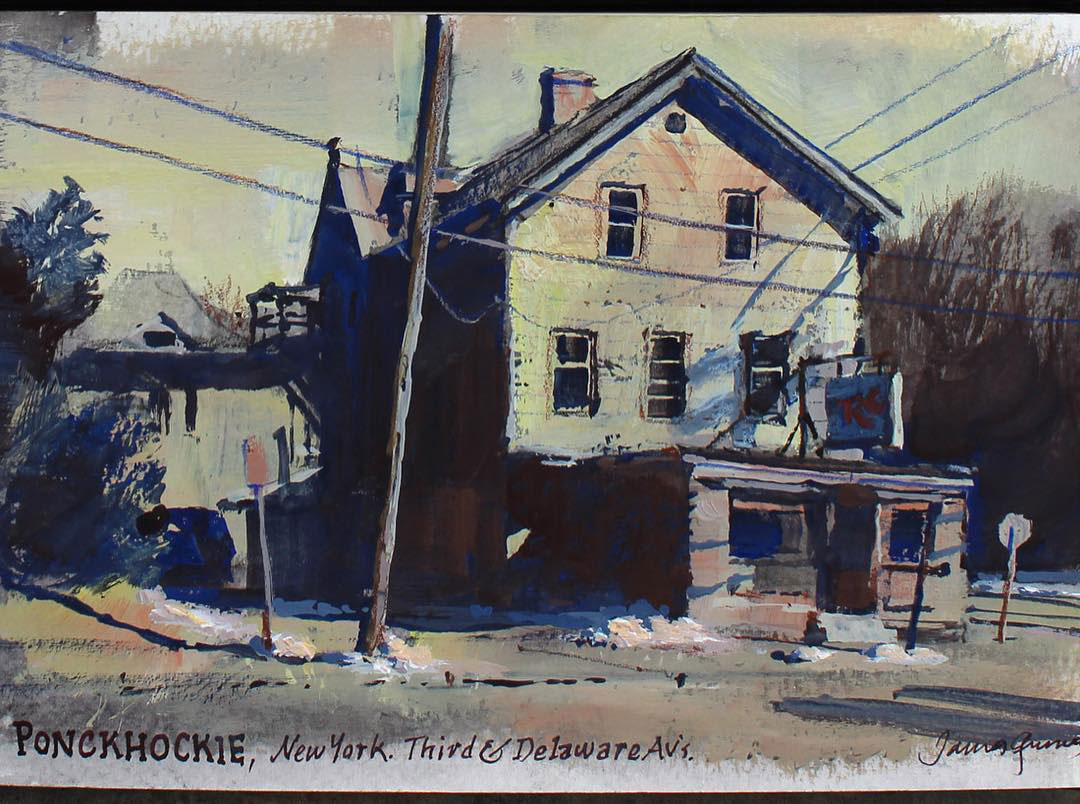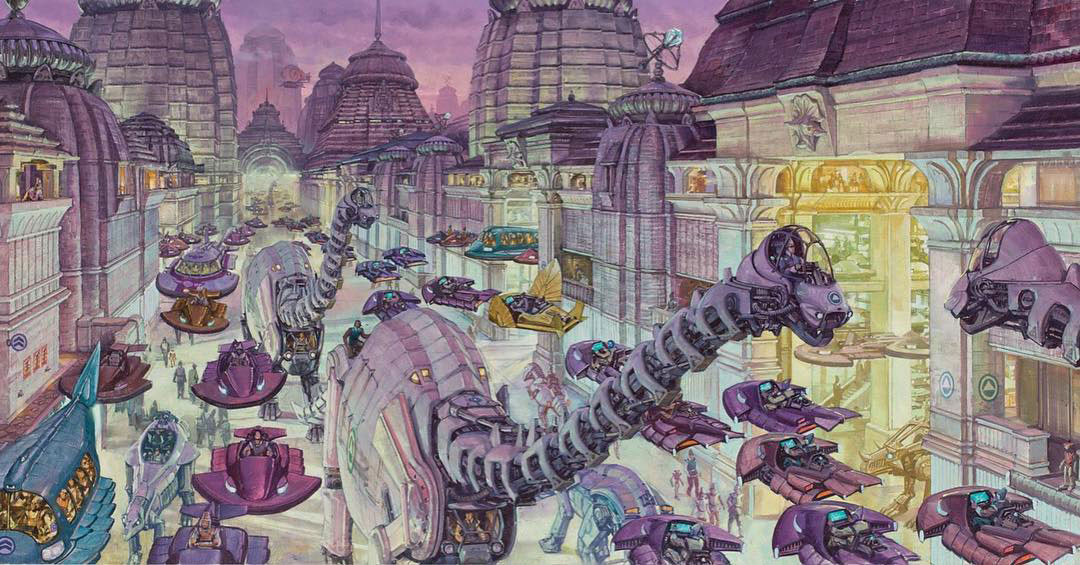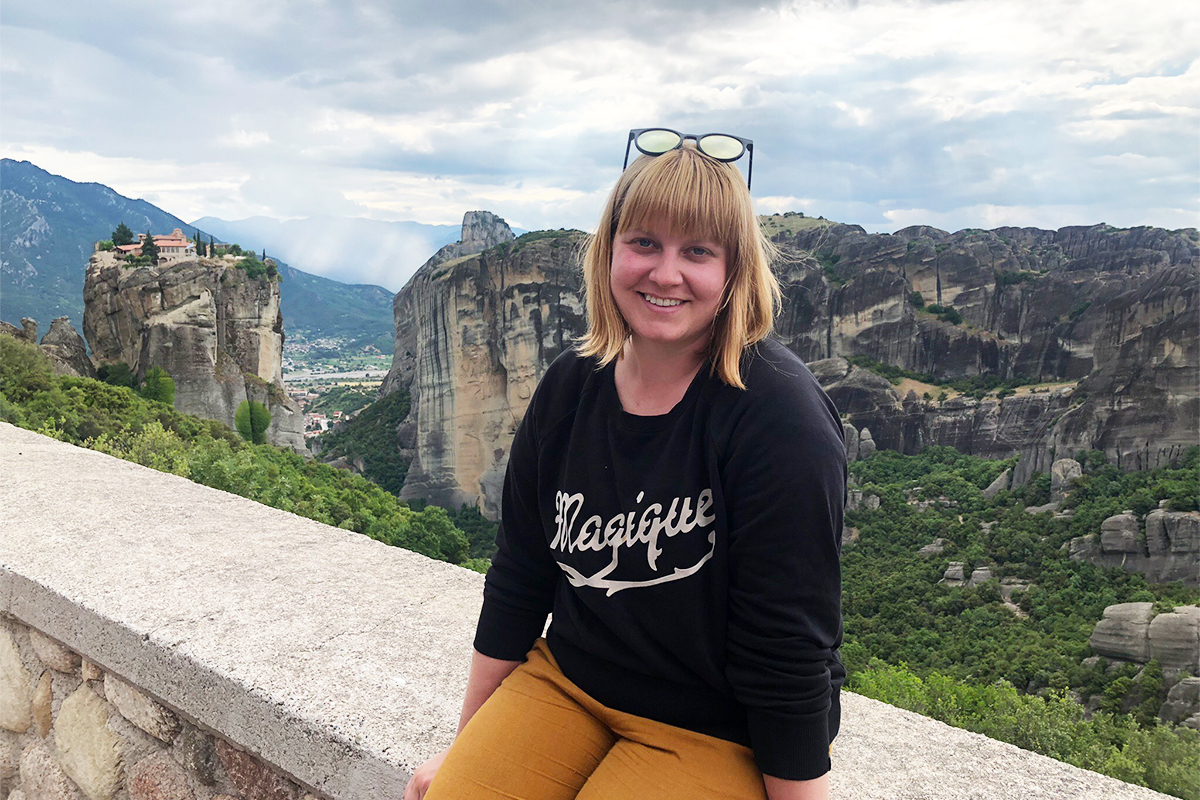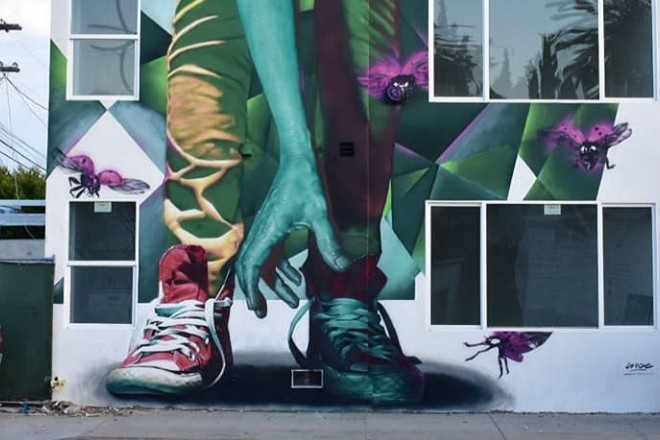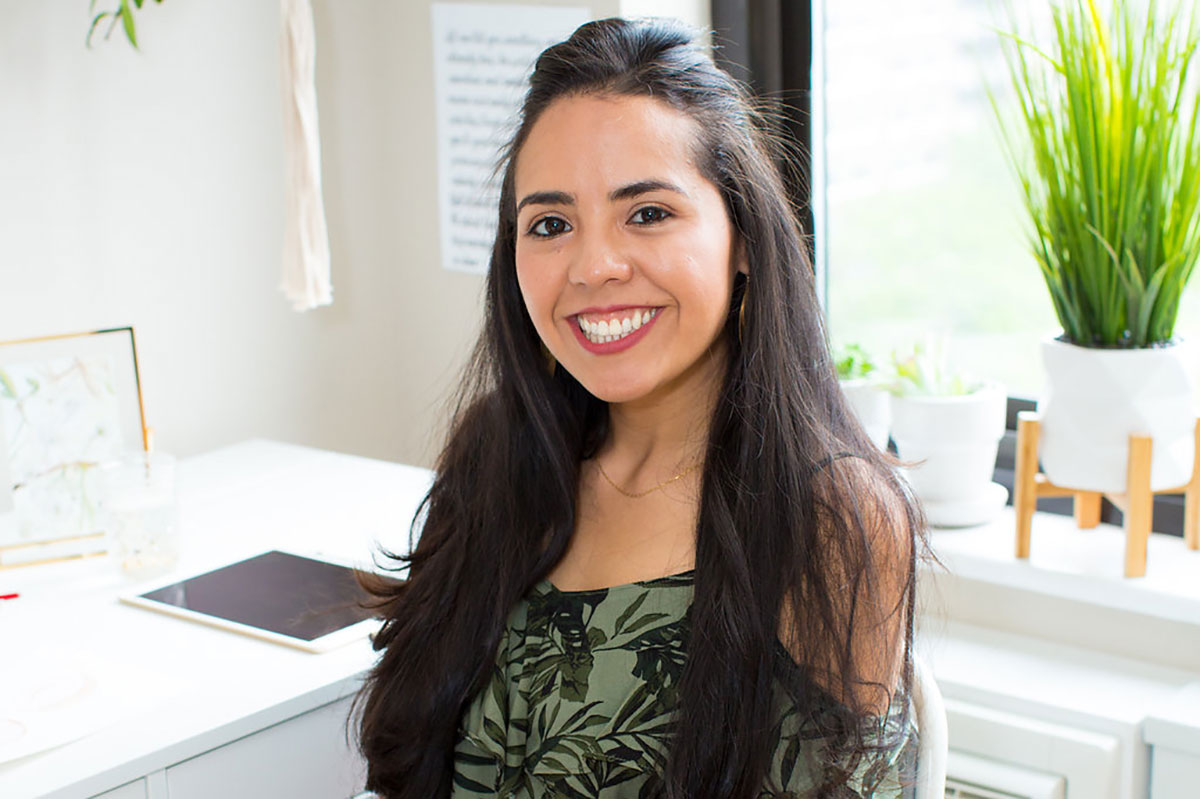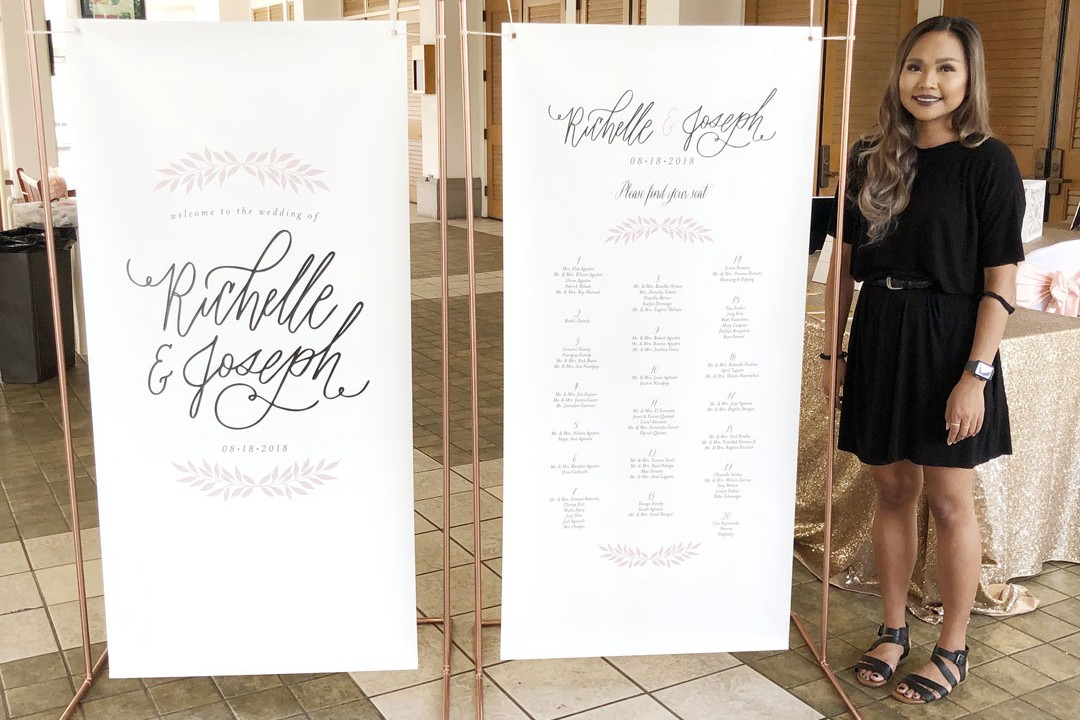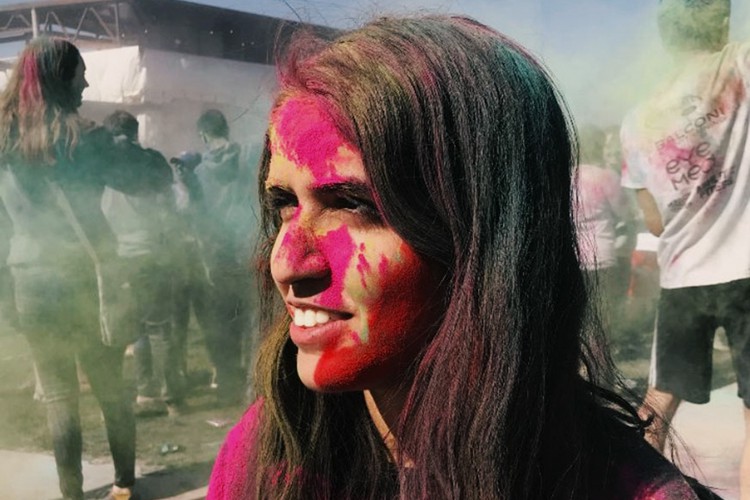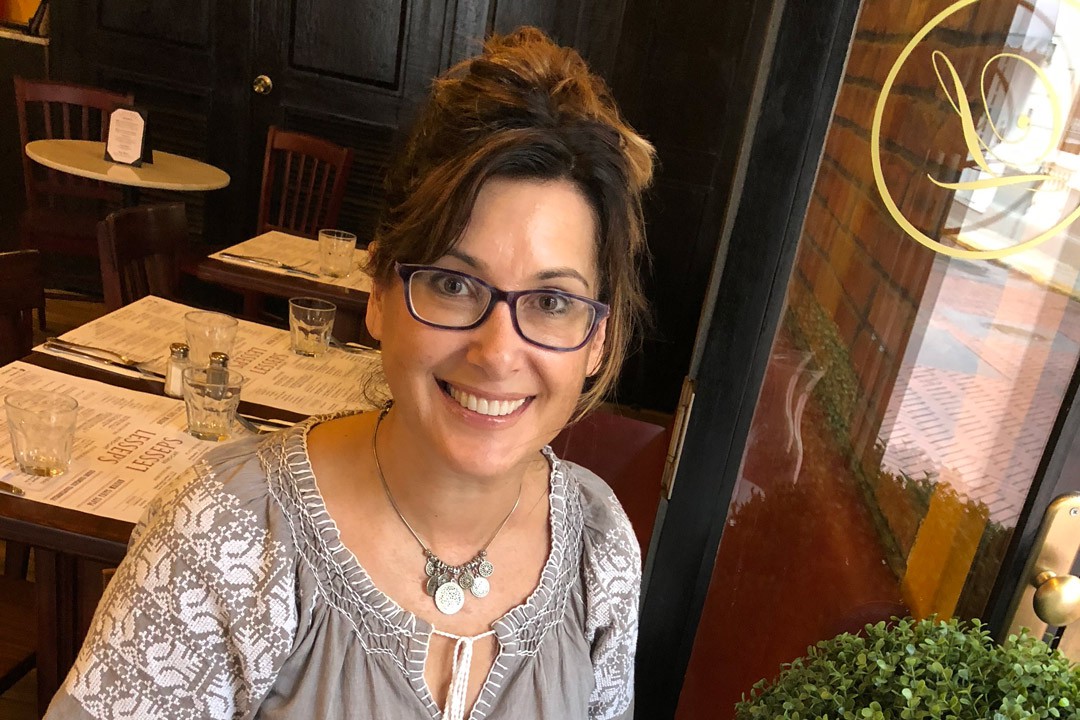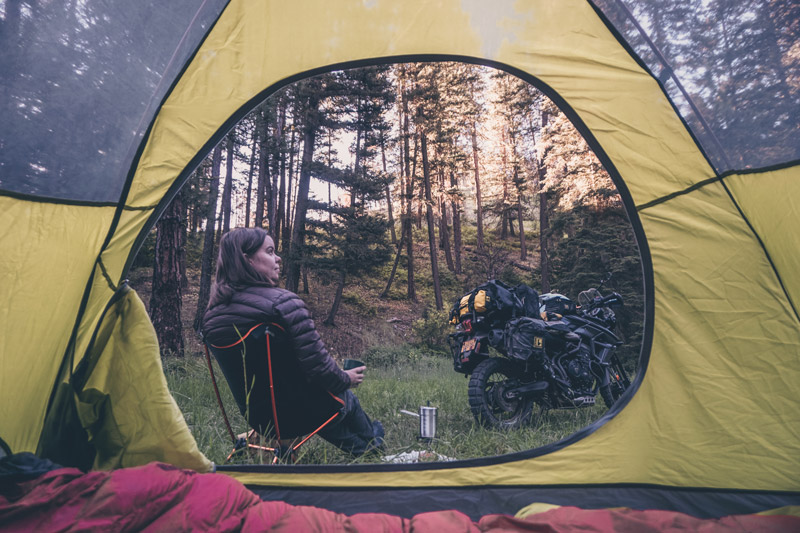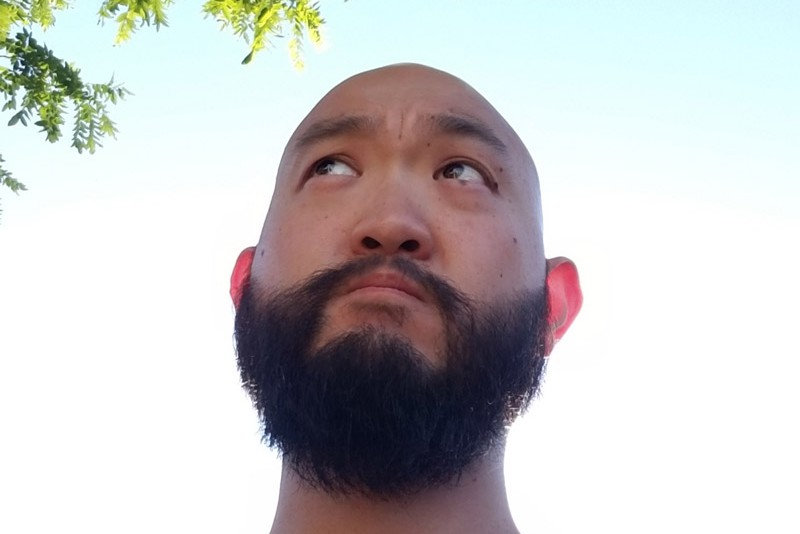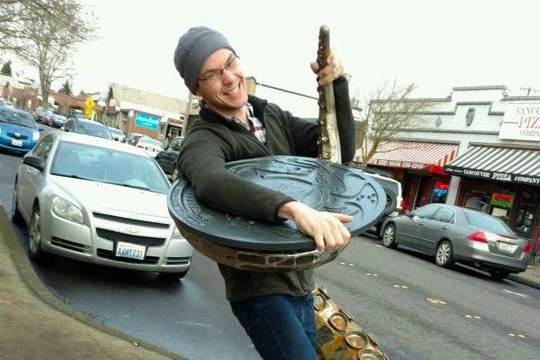Award-winning illustrator and painting blogger James Gurney @jamesgurney discusses drawing dinosaurs, artistic advice, “fruit salad disease”, and the peculiar ways his painting sessions have been interrupted in the newest Pentalic blog.
You are very well-known for authoring and illustrating the multiple award-winning Dinotopia series, in which dinosaurs and humans live harmoniously in a symbiotic society. What initially inspired you to draw and paint dinosaurs?
I have been fascinated with archaeology since I was a little kid by reading old copies of National Geographic. I ended up majoring in archaeology at University of California at Berkeley, and, even then, I was working with archaeologists and paleontologists to reconstruct lost worlds. I worked for National Geographic all through the 1980s, painting archaeological reconstructions for them, while painting paperback covers for science fiction novels. I combined those interests with my love of Jules Verne by coming up with a series of lost world panoramas in my spare time. One of them was called “Dinosaur Parade.” The idea was to reimagine dinosaurs, not just as monsters or dull sluggards in the swamp, but to pick up on what Bakker and Horner were proposing about caregiving and warm- bloodedness. One of the first paleontologists to help me out was Mike Brett-Surman of the Smithsonian Museum, who shared my love of both science and science fiction. I was thrilled when Mike curated the Dinotopia exhibit at the National Museum of Natural History.
You told us you had to drop out of art school because you got a job working in the movie industry as a background painter. How did you get the job and what did you learn from that experience?
Here was my situation: I was broke, my fiancée wanted to finish art school, and I already had a college degree (in archaeology). My plan was to find an art job to pay off her loans, whilst I crib off of her class notes. It wasn’t so easy! I couldn’t find work in the freelance world. I made cold calls to all the animation studios I could think of: Disney, Bluth and Hanna-Barbera. None of them wanted to hire me, and my portfolio was not too impressive anyway. I was okay at drawing, but had never really painted. I thought my art career was over at age 21. Then I stumbled into Ralph Bakshi Productions. The studio was staffing up for an animated sword and sorcery film called “Fire and Ice”. Bakshi gave me a chance as a background painter, even though I didn’t know much about the business. It was like art school under a shotgun with a paycheck. I had to produce about 600 paintings in a little over a year, at a rate of about 11 per week. Paint or die! It was a much better education than I would have gotten in art school.
Which illustrators have influenced your work the most and in what ways?
All of my heroes from the world of illustration are from the early decades of the 20th Century: Howard Pyle, Edwin Austin Abbey, N.C. Wyeth, Norman Rockwell, and Dean Cornwell. These artists carried on the grand tradition of academic history painting that was practiced all through the 19th Century. All of them believed that an illustrator must be an artist first, meaning that they must draw upon a personal vision in everything they do, whether it is for the cover of a magazine, an art print for the home, or a mural in a public building.
The approach I use for my imaginative studio work is developed from the teaching methods of the French Academy. When I was a student, I read everything I could find about academic artists like Alma Tadema, Bouguereau, and Jean Leon Gérôme. I wondered how in the world could these illustrators paint such lifelike scenes from their imaginations? The method is rather painstaking, starting with lots of research, pages and pages of thumbnail sketches, studies from a costumed model, miniature sets for the architectural elements, and a charcoal comprehensive study before launching into the final painting.
As a dedicated plein air sketcher and painter, what has been the most challenging aspect of plein air painting and how do you overcome it?
A lot can go wrong when you paint outdoors, especially unexpected events that bring a painting session to a dramatic halt. I call these “gamestoppers”. Of all of them, wind is the biggest enemy. I’ve had many easels blowdown. The way I overcome the problem is reducing the “sail area” of my easel and avoiding the notorious artists’ umbrellas. Instead I’ve developed a small, adjustable, lightweight diffuser that attaches to the top of my sketch easel.
Other gamestoppers I’ve had:
1. Sudden downpour occurred.
2. Painting fell face down.
3. Subject departed.
4. Forgot my brushes.
5. Fog covered the view.
6. The tide flooded my painting spot.
7. Cold air froze my watercolor.
8. Truck blocked the view.
9. Biting insects were unbearable.
10. Automatic sprinklers turned on.
11. Hordes of annoying tourists infiltrated.
12. Spat on by people above me.
13. My chair collapsed in museum.
14. Drawbridge lifted while I’m on it.
15. Donkey rested its head in my lap.
16. Easel was blown into rapids.
17. Jostled by drunk dancers.
18. Menaced by a bull.
19. Kicked out by a guard.
20. Ejected by nun.
What is your favorite Pentalic product and why?
I’ve been using the Aqua Journal for quite a few years now. I like the paper because it will handle any medium I use, from colored pencils to ink, and gouache to casein.
How do you keep yourself motivated and inspired to create art?
I’ve always lived off the brush and I’ve always painted what I want. Some years a lot of money rolls in; other years I make less than a janitor. But I’ve always been happy and followed my muse. I believe every artist should have some knowledge of social media. I also encourage every art student to get schooling in business: marketing, public relations, contracts, accounting, especially in this creator-producer age. It’s important to know about distribution and sales. If art schools don’t offer this, you can pick it up on your own.
I’m always trying to learn how to make what I love to do pay for my living. That being said, I try to keep business considerations from driving what I do or how I do it. I just want to have fun doing the very best quality work. I have faith that enough people will support me to keep me doing it!
What is your rule of thumb for creating the perfect color palette?
When it comes to color, less is more. It’s fun to own a lot of tube colors, but squeezing them all out on your palette doesn’t guarantee a good color scheme. Too many pigments can lead to “fruit salad disease,” a malady where unrelated bright colors compete for attention. A limited or restricted palette results in a painting with a more harmonious effect. I grab a semi-random color from each of the color families (yellow, red and blue) and ensure that one color is high-chroma and the other colors are low-chroma. For example, I might head out for the day with only Yellow Ochre, Maroon Perylene, and Ultramarine Blue, plus Titanium White.
What are your favorite subjects for plein air painting and why?
I have no list of favorite subjects. I’m usually uninterested in popular painting destinations in places that are overrun with artists. I prefer non-motifs, the little beauties that everyone passes by. The subjects that mean the most to me are those closest to my life, such as local car dealerships, laundromats, or the backs of supermarkets. I also love to paint things that artists almost never paint, such as cell towers.
The art industry is very competitive these days. What advice could you give to new artists to help them stand out from the crowd?
Some parts of the arts industry are more competitive than others, especially in certain industries. But there are always opportunities. For example, fewer people think of scientific illustration or toy design, compared to movie concept art. And within the field of concept art, many more people try to break into character design more than environmental design. I don’t think young artists should worry about standing out or developing a unique style. Art schools too often push young artists to develop a distinctive style before they’ve even begun to master the basics of perspective, anatomy, color, and light. I think it’s more important to be able to draw nature faithfully and express visual ideas clearly without calling attention to style.
Follow James here!
Instagram:jamesgurneyart
YouTube:James Gurney
Blog:GurneyJourney Years
Facebook:James Gurney Artist
Websites:jamesgurney.com
Dinotopia.com


